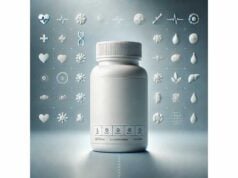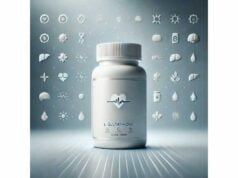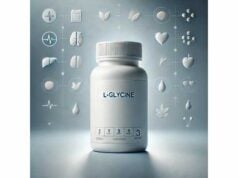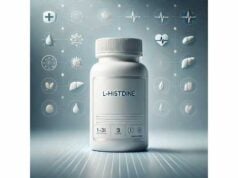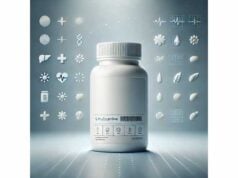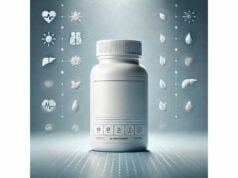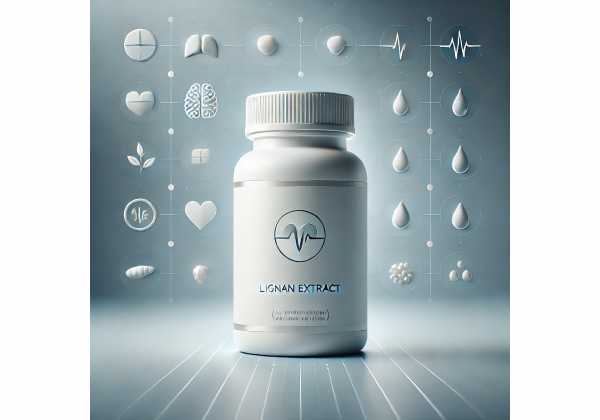
Lignan extract concentrates a family of plant polyphenols—most famously the flaxseed lignan secoisolariciresinol diglucoside (SDG)—that the gut microbiome converts into “enterolignans” such as enterolactone and enterodiol. Interest in lignans has grown because these compounds appear to influence lipid metabolism, blood pressure, inflammation, and hormone signaling in a nuanced, tissue-specific way. You can obtain lignans from foods like flaxseed, sesame, rye, and some berries; standardized supplements offer defined doses for people who do not consistently consume these foods. This guide explains what lignan extracts are, where they fit among everyday nutrition options, who may benefit, how to use them responsibly, and what to expect in terms of safety. You will also find practical dosing ranges, timing tips, and edge cases—such as hormone-sensitive conditions—where medical guidance is particularly important. If you’ve wondered whether lignans are simply “plant estrogens,” a heart-healthy fiber add-on, or something more, the sections below unpack the science into clear takeaways you can apply.
Quick Overview
- Supports cardiometabolic health: human trials suggest benefits for LDL-C and blood pressure in select groups.
- Typical supplement range: 50–300 mg/day SDG; some trials tested up to 600 mg/day.
- Safety caveat: mild gastrointestinal upset is possible; monitor blood pressure and glucose if using higher doses.
- Avoid or use only under medical guidance if pregnant, breastfeeding, or managing hormone-sensitive cancers or on anticoagulants.
Table of Contents
- What is lignan extract and how it works
- Proven benefits in humans
- Who is most likely to benefit
- How to take lignan extract: capsules or food?
- How much lignan extract per day?
- Side effects, interactions, and when to avoid
What is lignan extract and how it works
Lignans are a class of phenolic compounds found in many plants, with flaxseed providing the richest commonly eaten source. The predominant flaxseed lignan, SDG, is embedded in the seed’s fiber matrix. When you ingest food-based or supplemental lignans, colonic bacteria convert them to enterodiol and enterolactone—bioactive metabolites collectively called “enterolignans.” These are what circulate in your blood and ultimately interact with tissues.
Mechanistically, enterolignans are pleiotropic. They modestly interact with estrogen receptors (alpha and beta) but behave less like “weak estrogens” and more like selective modulators—sometimes dampening, sometimes nudging signaling depending on the tissue, receptor subtype, and prevailing hormonal milieu. That nuance is why lignans can be explored for women’s health without behaving like a high-dose hormone therapy. Beyond receptor binding, lignans influence several metabolic and vascular pathways:
- Lipids: They appear to support lower LDL-cholesterol and total cholesterol in some adults, potentially by influencing hepatic cholesterol handling and bile acid metabolism.
- Vascular tone and inflammation: Enterolignans may reduce vascular oxidative stress and support healthier nitric oxide signaling, mechanisms relevant to blood pressure.
- Microbiome synergy: Because conversion to enterolignans depends on gut microbes, your habitual diet, fiber intake, and antibiotic exposure can shape response.
- Antioxidant and anti-inflammatory effects: In cell and animal work, lignans modulate NF-κB–related pathways and oxidative enzymes; in humans, signals show up as small improvements in inflammatory markers in some trials.
Not all “lignan extracts” are identical. Products vary by source (flaxseed versus mixed-plant blends), standardization (most list SDG mg per serving), and formulation (pure SDG, lignan complexes, or food-based powders). Your gut microbiome diversity and baseline diet further modulate how much enterolactone you produce from a given dose. Put simply: you ingest SDG, your microbes do the heavy lifting, and your body experiences the effects primarily from enterolignans.
Proven benefits in humans
Human research on lignans spans cardiometabolic health, menopausal comfort, and hormone-related outcomes. While not every study is positive—and lignans are not a cure-all—there are consistent signals in a few areas:
LDL-cholesterol and lipids
A randomized, double-blind trial in adults with borderline-elevated LDL-cholesterol tested 60 mg/day of purified SDG for 12 weeks. Men receiving SDG experienced statistically significant reductions in LDL-cholesterol and total cholesterol versus placebo, whereas the effect was not observed in women in that trial. This aligns with earlier nutrition research suggesting lignan-rich flaxseed can shift lipid profiles modestly, though magnitude depends on baseline diet, dose, and sex.
Blood pressure support
Observational data connecting higher enterolactone levels with lower blood pressure have been bolstered by trials using flaxseed foods (which deliver lignans plus other components). In hypertensive or vascular-compromised patients, daily flaxseed has produced clinically meaningful reductions in systolic and diastolic blood pressure in some studies. While flaxseed contains alpha-linolenic acid (ALA) and fiber alongside lignans, converging evidence points to lignans contributing to vascular benefits—possibly through antioxidant signaling and improved endothelial function. For supplemental lignans specifically, improvements in blood pressure are most likely when baseline blood pressure is elevated and the broader diet supports gut microbial conversion.
Women’s health and hormone-related outcomes
Because lignans are metabolized into enterolignans that can interact with estrogen receptors, researchers have explored menopausal symptoms and long-term outcomes after breast cancer. Results for hot flashes are mixed: small or uncontrolled studies suggested improvement, whereas rigorous, placebo-controlled trials have often found little to no effect on vasomotor symptoms. On the other hand, pooled observational data suggest that higher enterolactone exposure in postmenopausal women with breast cancer is associated with better long-term outcomes. These findings are not a prescription to self-supplement during cancer care; they do suggest lignan-rich dietary patterns can be part of supportive nutrition under oncology guidance.
Glycemic and inflammatory markers
Trials using 300–600 mg/day SDG in older adults and people with metabolic risks have evaluated safety and changes in glucose or inflammatory biomarkers, with mixed but generally reassuring results. Some studies saw small reductions in fasting glucose or oxidative stress markers, particularly at higher doses or in those with suboptimal baseline measures. Effects on body weight are typically neutral; lignan extracts are not weight-loss agents.
What to expect
If you’re using lignan extract for cardiometabolic support, measurable changes (for example, LDL-C or clinic blood pressure) usually show up after 8–12 weeks of consistent intake. Magnitude is modest and depends on your baseline numbers, diet quality, and microbiome. Lignans should slot in alongside fundamentals—Mediterranean-style eating, adequate fiber, regular activity, and sleep—not replace them.
Who is most likely to benefit
Lignan extracts are not aimed at everyone equally. They work best when matched to the right context:
Good candidates
- Adults with borderline-high LDL-cholesterol who are optimizing diet and lifestyle and want an evidence-based botanical adjunct.
- People with elevated blood pressure or vascular risk who have already addressed sodium, weight, and activity, especially if they cannot regularly eat flaxseed or sesame.
- Individuals pursuing a plant-forward pattern who want to standardize lignan intake when diet varies.
- Postmenopausal adults seeking broader cardiometabolic support from diet-derived polyphenols, particularly those whose gut microbiome generates robust enterolactone (often reflected by high fiber intake and minimal recent antibiotic use).
Situations requiring extra nuance
- Hormone-sensitive conditions. Lignans interact with estrogen receptors in a modulatory way that can differ by tissue and life stage. While epidemiology suggests potential benefits after breast cancer in postmenopausal women, supplementation decisions during active treatment or for premenopausal hormone-sensitive conditions should be made with an oncologist or endocrinologist.
- Low-fiber, low-diversity diets. Because microbes convert SDG to enterolactone, people with very low fiber intake or recent broad-spectrum antibiotic use may see diminished response until their diet and microbiome recover.
- Polypharmacy and chronic conditions. If you take anticoagulants, antiplatelets, antihypertensives, or hypoglycemics, track numbers when starting a lignan extract. Lignans are not known to strongly interact with drug metabolism, but additive physiologic effects—like a small drop in blood pressure—are possible.
- Digestive sensitivity. Lignan capsules are generally gentler than whole-seed fiber for people with IBS-like symptoms. If you struggle with high-fiber foods, a standardized extract may be more comfortable and predictable.
Who should likely avoid
- People who are pregnant or breastfeeding (insufficient high-quality safety data for concentrated extracts).
- Anyone advised by their clinician to avoid phytoestrogens due to specific medical circumstances.
- Individuals with known flax or sesame allergy (check source materials on the label).
To get the most from lignans, prioritize the basics: steady fiber intake (25–38 g/day), varied plant foods, and consistent routines that nurture a resilient microbiome. The extract works with, not instead of, your daily pattern.
How to take lignan extract: capsules or food?
You can meet lignan goals through foods, supplements, or both. Each pathway has advantages:
Food route (preferred foundation)
- Flaxseed (ground): Among the richest natural sources of SDG. Two tablespoons (≈15–20 g) of freshly ground flaxseed daily is a practical, affordable starting point. Stir into yogurt or oats, blend into smoothies, or sprinkle on salads. Whole seeds pass through largely undigested; grind right before use or buy cold-milled products.
- Sesame seeds and tahini: Provide sesamin and related lignans. Helpful for variety, though flaxseed usually delivers more SDG per gram.
- Rye, barley, and certain berries: Add smaller amounts that contribute to overall exposure and feed the microbiome.
- Diet pattern synergy: A Mediterranean-style template (vegetables, legumes, whole grains, nuts, olive oil, fish) complements lignans and supports the microbes that convert them into enterolignans.
Supplement route (for standardization or intolerance)
- Standardized SDG capsules: Typical per-capsule amounts are 20–100 mg SDG. Common daily totals: 50–300 mg/day. Some research protocols used up to 600 mg/day.
- Lignan complexes: Some products combine SDG with sesame lignans or fiber. Choose reputable brands that provide third-party testing and clearly list SDG content per serving.
- Timing with meals: Taking lignans with food can improve tolerance and, practically, aligns with when fiber and fats are present—helpful for absorption and steady microbiome feeding. Morning or evening timing is less important than consistency.
Food vs. supplement: which is better?
If you tolerate fiber, prioritize food first. Foods bring ALA, fiber, minerals, and satiety benefits that a capsule does not. Use a standardized extract when: (1) you want predictable SDG intake while traveling or during inconsistent weeks; (2) your clinician has recommended a defined dose for a period; or (3) you struggle with the texture or GI fullness from flaxseed foods. Many people use both: a modest food baseline plus a small supplemental dose to reach a target range.
Practical add-ons
- Store ground flaxseed in the fridge or freezer to slow oxidation.
- If starting from a very low-fiber diet, ramp up gradually over 1–2 weeks and increase water intake to minimize bloating.
- Track specific outcomes that matter to you (LDL-C, home blood pressure) every 8–12 weeks to judge benefit.
How much lignan extract per day?
General supplemental range (adults): 50–300 mg/day SDG
- This covers most off-the-shelf products and aligns with doses used in many human studies. For first-time users focused on cardiometabolic support, 50–100 mg/day is a prudent starting range.
Higher-dose research protocols: up to 600 mg/day SDG
- Select trials in older adults or people at metabolic risk have evaluated 300–600 mg/day. These higher intakes appear well-tolerated short-term in supervised settings, but they are not necessary for everyone. If you and your clinician decide to try a higher dose, monitor blood pressure and fasting glucose during the first 4–8 weeks.
Food equivalents
- Daily intakes of 15–30 g ground flaxseed can provide a meaningful lignan contribution while adding fiber and ALA. Because SDG content varies by crop and processing, exact equivalence to capsule milligrams is imprecise. A blended approach—some ground flaxseed plus a modest SDG capsule—offers both breadth and dose precision.
Timing and duration
- Take lignans consistently with meals, ideally at the same time each day. Reassess at 8–12 weeks. If you observe objective improvements (e.g., LDL-C down 5–10%, average home systolic blood pressure down a few mmHg), you can continue and retest every 3–6 months. If no change, re-evaluate dose, diet quality (especially fiber), and medications.
Special groups
- Postmenopausal adults pursuing heart-health markers: Start at 50–100 mg/day SDG or use daily ground flaxseed; titrate based on response.
- People managing hypertension: Combine dietary flaxseed or SDG with core strategies (sodium reduction, DASH-style eating, activity). Discuss home BP monitoring with your clinician; do not adjust prescription therapy without medical advice.
- Athletes or highly active individuals: Lignans are not ergogenic aids; expect neutral effects on performance but potential cardiometabolic benefits over time.
What not to do
- Do not treat lignans as a stand-alone fix for high LDL-C or hypertension. Use them as one component of a broader plan that may include medications when indicated.
- Avoid stacking multiple phytoestrogen supplements indiscriminately; redundancy adds cost and complexity without clear benefit.
Side effects, interactions, and when to avoid
Common and usually mild
- Digestive symptoms: Bloating, gas, or a sense of fullness—more likely from whole or ground flaxseed than from purified extracts. Slow titration and adequate fluids help.
- Stool changes: Increased frequency or softer stools in the first few days with higher food-fiber intakes.
Less common considerations
- Blood pressure and glucose shifts: In people with elevated baseline readings, lignans may contribute to small reductions. If you are on antihypertensives or diabetes medications, check numbers regularly when you start or change doses.
- Hormone-sensitive conditions: Lignans are selective hormone-modulators, not hormone replacements. Still, concentrated extracts during pregnancy, breastfeeding, or active management of hormone-sensitive cancers should be decided with your clinician. Postmenopausal women with prior breast cancer should involve their oncology team if considering supplements (dietary lignans from foods within a balanced diet are generally acceptable).
- Allergy: Rare, but possible in individuals allergic to flax or sesame; verify the botanical source on the label.
Medication interactions
- Clinically significant interactions are uncommon. Nonetheless, use caution and medical guidance if you take:
- Anticoagulants/antiplatelets: High-fiber foods and certain botanicals can affect absorption of other medications or add minor hemostatic effects; space dosing and monitor as advised.
- Antihypertensives or hypoglycemics: Track values to avoid over-correction.
- Antibiotics: These can transiently reduce your conversion of SDG to enterolignans; the effect is temporary and resolves as the microbiome recovers.
Quality and contamination
- Choose products with third-party testing for potency and contaminants. On labels, look for the SDG amount per serving and a lot number. Avoid proprietary blends that do not disclose SDG content.
When to stop and seek care
- New or unexplained vaginal bleeding, persistent abdominal pain, allergic reactions, or marked changes in blood pressure or glucose warrant prompt evaluation and discontinuation until you have medical advice.
Bottom line: lignan extracts are widely well-tolerated when used at typical doses and integrated into a healthy eating pattern. Respect individual variability, monitor objective markers, and collaborate with your healthcare team if you have complex medical conditions.
References
- Availability of dietary secoisolariciresinol diglucoside on borderline blood cholesterol level in men: a randomized, parallel, controlled, double-blinded clinical trial 2024 (RCT)
- Association of enterolactone with blood pressure and hypertension risk in NHANES 2024 (Observational)
- Importance of Flaxseed and its Components in the Prevention of Cardiovascular Disease 2019 (Review)
- Phytonutrients and outcomes following breast cancer: a systematic review and meta-analysis of observational studies 2023 (Systematic Review)
- A Phase III, Randomized, Placebo-Controlled, Double-Blind Trial of Flaxseed for the Treatment of Hot Flashes 2012 (RCT)
Disclaimer
This article provides general information about lignan extracts and is not a substitute for professional medical advice, diagnosis, or treatment. Always talk with your healthcare provider before starting, stopping, or changing any supplement—especially if you are pregnant or breastfeeding; have a history of hormone-sensitive conditions; or take prescription medications for blood pressure, lipids, blood clotting, or blood sugar. Never delay seeking medical care because of something you read here.
If you found this guide useful, consider sharing it with a friend or on Facebook or X (formerly Twitter), and follow us for future evidence-based wellness articles. Your support helps us keep producing high-quality content.

